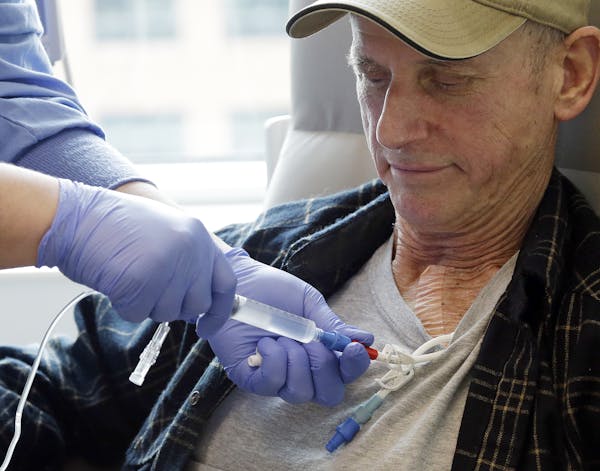Adam Nash was dubbed "Little Frankenstein" by the New York Post in 2000 because he was conceived via in vitro fertilization — specifically so doctors at the University of Minnesota could collect stem cells from his umbilical cord blood to save his sister, Molly.
Today, back home in Colorado, Adam has a driver's license and helps disabled children ski. His sister — once weeks from death due to a condition called Fanconi anemia — is debating whether to focus on oceanography or graphic design in college. And IVF to produce an ideal child for a sibling's stem cell transplant is common, albeit with lingering ethics concerns.
A squirrelly trio of teens is vindication for Adam's mother, Lisa Nash, who felt the weight of the ethical questions when the U's Dr. John Wagner suggested IVF in 1995.
"Molly was dying. She was in bone-marrow failure and she had pre-leukemia," said Nash, whose family was back in Minnesota last week. "We basically used Adam's garbage to save Molly's life," because cord blood is discarded after birth.
Wagner's idea raised fears that parents might one day conceive children to harvest their organs — the Nash story inspired a dramatic movie called "My Sister's Keeper" — or select embryos based on traits such as hair color.
"We were choosing an embryo on the basis of a trait that was of no benefit to the child being born. People believed it was a slippery slope," said Wagner, an expert on transplants for Fanconi anemia, a disorder marked by inadequate production of blood cells.
The initial IVF rounds failed. As Molly grew sicker, the Nashes debated using stem cells from an unrelated donor. But the final round produced Adam's embryo, which had no trace of Fanconi anemia and was an ideal match for Molly's transplant. The IVF process also produced an embryo that would become the Nashes' third child, Delaine.
While the IVF approach has saved many other patients with Fanconi anemia, Wagner said its use is declining. Improved transplant techniques have boosted the odds of success using nonrelative cord blood, from 20 percent at the time of Molly's transplant to 90 percent today.
Molly, 22, has lingering disabilities and will likely be in her parents' care for life. But she's getting good grades, led a dance class for kids and performed in community theater.
"We have a perfectly abnormal family," Nash quipped.
Jeremy Olson • 612-673-7744

The Lyrid meteor shower peaks this weekend, but it may be hard to see it

Legislation that could force a TikTok ban revived as part of House foreign aid package
![Cattle at the Wysocki Dairy CAFO (concentrated animal feeding operation) in Armenia, Wisc. in late October. ] Aaron Lavinsky • aaron.lavinsky@s](https://arc.stimg.co/startribunemedia/GNUPD5JDUEDREIFU5RKJM2EV2Y.jpg?h=91&w=145&fit=crop&bg=999&crop=faces)
Iowa environmental groups ask EPA to step in and protect drinking water

Why you should donate clothing: It (probably) won't end up at the dump

